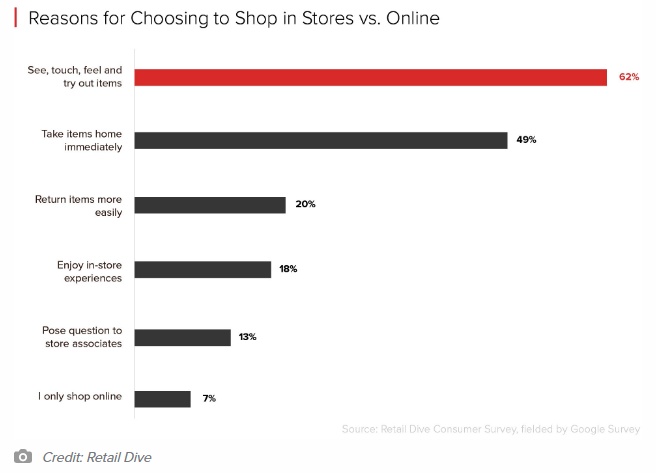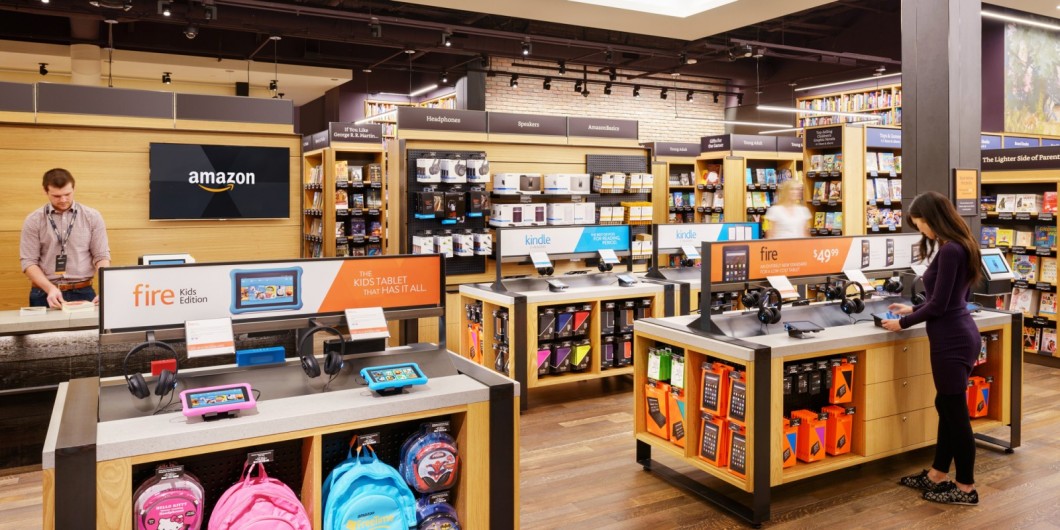Toys ‘R’ Us has closed its doors. Sears is gone. Macy’s is reviewing its strategy, now in ruins, before it’s too late. For many, it’s the end of an era, but brick and mortar isn’t quite ready to surrender to ecommerce just yet.
In fact, in recent years, there’s been a noticeable slow-down in the progress of ecommerce. There’s even a “back to basics” movement happening with once online-only brands.
Amazon is opening bookstores, after having killed a number of them. The online ecommerce giant also recently bought Whole Foods, which comprises millions of square feet of retail space. Warby Parker, the online eyewear retailer, continues to open brick and mortar stores, helping to drive the value of this start-up founded by four students in Philadelphia to nearly $1 billion. A little closer to home, the clothing retailer Frank And Oak now boasts 16 points of sale across Canada, with three more set to open in coming months. And yet, for many, Frank And Oak was a gold standard for ecommerce.
With so much potential success online, why go back to brick and mortar? There are many reasons, but here are five I find worth noting:
- Touching, seeing, feeling and trying on before purchase is still necessary.
Consumers have never wandered away entirely from buying in stores. Even Millennials are regularly spotted in the aisles. It’s the way that we shop and buy that has changed.

I recently interviewed a representative of Frank And Oak on this very topic. The Quebec-based company was receiving many requests from clients wanting to try on the clothing before buying online. In response, they opened a demo space at their workshop on St-Viateur Street in Montreal. When clients came to the space, they then assumed they could leave with the pieces, but there was no inventory on site. Lesson learned. Today, Frank And Oak has boutiques where consumers can touch, see, feel… and leave with their purchases.
2. A brick and mortar boutique boosts your visibility.
“We also see a halo effect where stores themselves become a great generator of awareness for our brand and drive a lot of traffic to our website, as well and accelerate our ecommerce sales.” Dave Gilboa, Co-Founder, Warby Parker
Having an actual storefront can mean that more people are looking for and talking about the brand online, which will encourage sales. That’s definitely what Dave Gilboa is hinting at in the above quote, but he isn’t only referring to online search.
More often than not, the sales generated by a few brick and mortars won’t be enough to justify the physical space occupied. These prestigious boutiques represent retail space, but they are also visual “billboards” that promise a brand experience.
3. Retail space, retail experience.
Retail today is a personalized buying experience, it has to be consistent and flow smoothly across multiple channels. In other words, it’s omnichannel retail.
The retail experience is just icing. The intention is to give your consumers a memorable purchase experience. The experience must then be modelled on the consumers who will enjoy it and not just on the product you’re selling.
Frank And Oak also offers barber and barista services in its clothing stores. Warby Parker focuses on the expertise of its optometrists and the boutique’s very minimalist décor, which is in line with the brand. Amazon’s brick and mortar stores offer a variety of perks, including a checkout-free shopping experience, on-site demos of products like the Kindle Reader and stock of their best sellers, as determined by website data.
A strong retail experience makes a good impression on your consumers, creates natural ambassadors and fosters their loyalty. It is, without a doubt, the biggest benefit that brick and mortar can bring.
4. The limits of ecommerce.
In the last 20 years, ecommerce has completely reshaped consumers’ buying habits without taking up too much space. Ecommerce today represents approximately 10% of global sales. The momentum has slowed in recent years and seems to have stabilized. Considering that there are about 800,000 online boutiques vying for Internet dollars, the competition is, unsurprisingly, high. Even if giants like Amazon and Ali Baba draw considerable attention, don’t forget that 90% of purchases are still made in person, in a boutique or big box store.
5. Google loves brick and mortar.
To be competitive, appearing at the top of search engine results in key, but search engine optimization can be an extremely expensive process. Knowing that Google favours retailers with a brick and mortar presence, having a boutique continues to be a good idea.
So, why go back to brick and mortar?
Competition has gone global and points of contact are multiplying. As a result, we are talking less about the product and more about the experience. Ecommerce and brick and mortar stores are at a crossroads, but without placing them in opposition or in a complementary position. Rather, they mesh together to create an exceptional overall consumer experience. Yes, this shift is a return to basics, but it’s also a step towards the future of retail.


